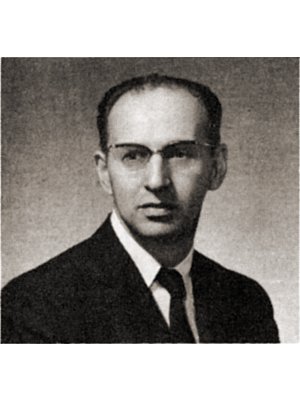Early German-American Imprints
Prof. Heinz Wilsdorf
About a man who fulfilled his dream in the hearvest of his life,
about the book he wrote and the collection of valuable imprints he left to his old university in Goettingen

From Pomeria via Berlin and London to South Africa
Heinz G. F. Wilsdorf, Prof. emer. of the University of Virginia, a world-renowned materials scientist, was born on 5th June 1917, Pennekow, Pomerania (now in Poland) and grew up in Berlin, Germany. He earned an MS degree in Berlin (wherein Werner Heisenberg was his major examiner) and completed his studies with a Ph.D. degree in materials science under G. Masing at Göttingen University. Here he met his future wife, Doris Kuhlmann, whom he married, in London, England, on January 4th, 1950. Since Heinz was unable to obtain a position in England and his visa application to the United states was indefinitely delayed, the couple very soon moved to South Africa where Heinz served as scientist at the Council for Scientific and Industrial Research in Pretoria. Heinz became one of the very first researchers world-wide in the area of metal electron microscopy, and soon invented some of the most successful techniques of sample preparation, most importantly the in-situ tensile testing of tiny metal samples while under observation in the electron microscope.
Then Philadelphia and the University of Virginia
Heinz’s great talents, hard efficient work, absolute trustworthiness and reliability, together with his tact and charming personality were rewarded by rapid promotions, up to Principal Research Scientist. Yet, even though the couple had great admiration and love for South Africa and made life-long friends there, they could not adapt to the apartheid policy, - albeit without being able to offer any suggestions on what could have been done better in a very difficult, complex situation. Therefore, after the birth of their two children, Gabriele and Michael, in 1956 Heinz accepted a research scientist position at the Franklin Institute in Philadelphia. Again, Heinz’s gifts led to a succession of rapid promotions up to the position of one of the three Technical Directors of the Franklin Institute. Very sadly, through a series of misguided decisions of the top management, it became ever more painfully clear that the Institute was doomed to fail (as it did a few years after) in spite of Heinz’s and colleagues’ very great efforts. Therefore Heinz regretfully left the Franklin Institute to accept the position of Chairman of the newly established Department of Materials Science in the Engineering School of the University of Virginia.
His brilliant career as a teacher and scientist...
With his typical enthusiasm, hard work, scientific brilliance and great skills in personal management, Heinz Wilsdorf developed the Department at UVA for its first thirteen years and guided it to its still held high national ranking among Materials Science Departments nationwide, indeed world-wide. Afterwards he continued his active important role in the Department until his retirement in 1990, latest as the Director of the Light Metals Center. Heinz authored about 150 scientific papers in the international literature and guided about forty graduate students to their MS and Ph.D. degrees, most of whom are still active in successful careers with continuing admir-ation and affection for their mentor.
Heinz Wilsdorf’s important contributions to electron microscopy and the science of metals, in particular surface studies, dental materials foremost among them dental amalgam, and studies of fracture, were recognized by numerous invitations to international conferences. As a result he traveled widely and received wide-ranging international recognition. As the last but particularly cherished, he received the 1995 Albert Easton White Distinguished Teacher Award.
... was ended by a stroke in 1990
The deaths of his two treasured children, Gabriele in 1969 and Michael in 1979, were crushing blows. Yet Heinz continued unswervingly with his life’s work, supported by a very happy marriage. His active career ended though a stroke in the summer of 1990 that left his left side severely weakened so that henceforth he was wheelchair-bound. Even so Heinz carried on with undaunted courage in active work but now in a different direction: Based on his life-long love for books and his impressive collection of antique books printed in the United Stated in the German language, he wrote the beautifully illustrated book “Early German-American Imprints”, Vol. 17 in the series New German-American Studies (Peter Lang, New York, 1998) that has since appeared as a paperback.
He passed on, April 17th 2000, in Charlottesville, VA, after a brief illness.Through his successful life as a scientist, as a wonderful devoted father and husband, and by his example of character, Heinz Wilsdorf has been an inspiration to many, and although he will be sadly missed, he will doubtlessly be most fondly and happily remembered by many. (Text taken from his Orbituary)